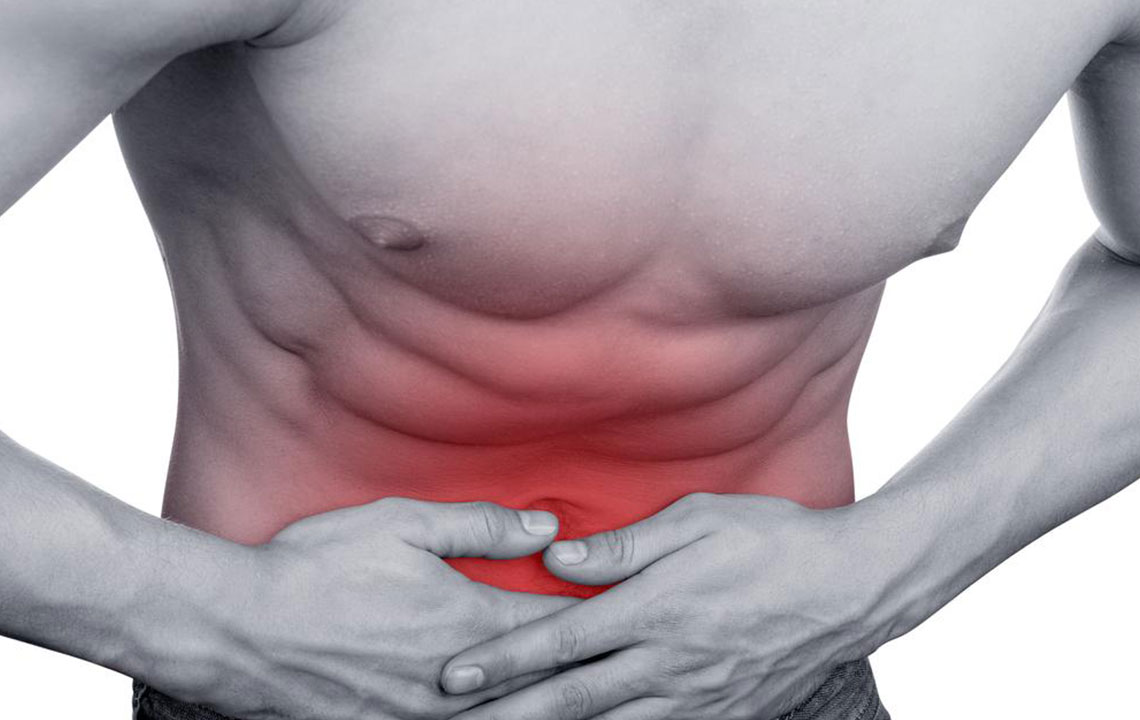Common Causes of Stomach Pain

Stomach pain is the occurrence of pain located in the stomach. Many conditions arise due to stomach pain which cannot be ignored. If stomach pain persists for long, with persistence thrice a week you should visit a doctor. Life-threatening conditions like cancer, gastritis or appendicitis may arise due to abdominal pain. Stomach pain is often experienced in the stomach region between chest and groin. Even though it is very common nowadays, pain and discomfort certainly makes you restless.
To prevent any fatalities a doctor will diagnose preferring the exclusion method which eliminates life-threatening conditions. Abdominal pain can severely affect your health, in the long run. Sometimes, cardiac pain symptoms can also indicate stomach pain causes observed. Stomach pain can occur unexpectedly which may be severe and happens to be a persistent condition. Be it a mild pain, stomach cramps or a mild stomach ache, abdominal pain has various causes. Generally, treating stomach pain depends on its cause and severity involved underlying the same.
Potential stomach pain causes:
Abdominal pain often occurs due to impairment in a particular organ. The cause underlying the same is not consequential and can be managed and taken care of.
- Sensitivity to lactose: Millions of people around the world have lactose intolerance. The body finds it difficult to digest lactose, a sugar found in all dairy products which can lead to uncomfortable manifestation. Symptoms include bloating stomach, diarrhea, gas, and constipation and vary based on the level of sensitivity. It can be replaced with soy milk products.
- Medications: Abdominal pain includes side effects of drugs and prescribed medicines. Medications surely save lives but it always comes with some unwanted side effects. The side effects may vary from person to person depending on its dosage, age, weight, gender and overall health.
- Sensitivity to gluten : Some people from gluten intolerance, a protein found in wheat, barley, and rye. The gluten causes damage in the small intestine and doesn’t absorb nutrients which lead to gas, bloating, mild-to-severe pain, constipation, tremors and fatigue.
- Endometriosis: Endometriosis affects women of all age groups. It’s a condition that occurs when cells from the uterus lining escape and start to grow. Pain, irregular bleeding, and infertility can result from the consistent pain.
- Thyroid: Thyroid is an endocrine gland situated in the neck. It is considered as one of the most important gland for the overall metabolism of our body. The problems involve abnormal production of thyroid hormones and the hormonal imbalance. Sometimes body produces too less or more of the thyroid hormone. Women are more prevalent to thyroid problems than men. Symptoms include goitre, cancer, enlarged neck, sore throat, lump in the throat, Hashimoto’s disease, increased blood flow etc.
- Stomach ulcers: It is mostly caused by infection with the bacterium. Here, mucus which protects the lining of the stomach is significantly reduced. Hence acids eat the tissues lining the stomach thereby causing an ulcer.
- Artificial sweeteners: Intake of excess sorbitol, which is found in some sugar-free products, can be one of the somach pain causes. Sorbitol goes into our gastrointestinal tract and since our body cannot absorb it, it gets to the bacteria in our colon. It then eats it to produce gas and fluids that leads to diarrhoea.
- Anxiety: Stress can cause headaches, high blood pressure, insomnia, depression and fatigue. Depression has been linked with digestive problems like loss of appetite, weight loss as well as irritable bowel syndrome. Depression may also cause stomach aches that lead to stress, nervousness and anxiety.
- Food poisoning: It is a condition which is caused by bacteria that were not killed during preparation of food. Food poisoning is due to consumption of contamination food, shelf life of the food, unhygienic storage conditions and the method of preparation. The food may contain harmful toxins released by bacteria. Common symptoms include fever and chills, abdominal pain, diarrhoea all major stomach pain causes.
- Inflammatory Bowel syndrome: Inflammatory bowel disease is an inflammation inside intestine. It causes prolonged inflammation of digestive tract. The inflammation results in stomach pain, nausea, insomnia, fatigue, weight loss, anemia etc. Inflammatory bowel disease occurs frequently in all age groups.
- Constipation: Constipation is a condition in which hard faeces are difficult to expel leading to one of the somach pain causes observed. The blocked faecal matter stretches the colon, forcing pain on the walls os the digestive tract thus leading to stomach pain.
- Parasites: It is a living organism that lives on or inside the body of the host. They usually cause diseases in human, some of which can be fatal while some are easily treated. Organisms derive their nutrients from the host and vice versa.
- Menses: Menstruation is an important stage of puberty in a woman’s life. Here, shedding of endometrium takes place through vagina and some women experience pain during periods like back pain, weakness, lower abdomen pain, stomach pain etc.


